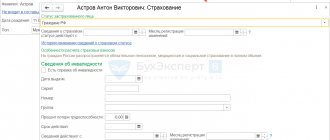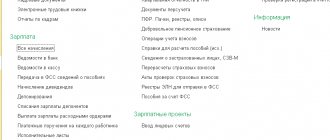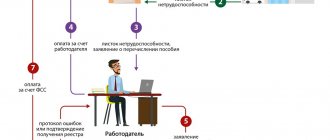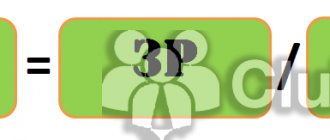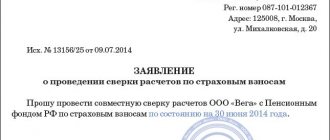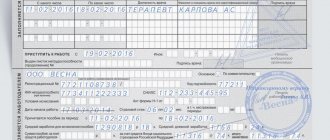We live in the age of information technology, where from year to year companies, private entrepreneurs and the state try to automate as many processes as possible and increase the efficiency of their activities. One example of such automation is the introduction of electronic sick leave and direct payments from the Social Insurance Fund (SIF).
From July 1, 2022, it has become possible to generate both paper sick leave and electronic certificates of incapacity for work (ELS).
What is ELN?
ELN is an analogue of a regular sick leave. Filled out in specialized programs or directly in the personal account of the Social Insurance Fund. The innovation significantly simplifies the work of an accountant and his interaction with the Social Insurance Fund, and also allows you not to worry about possible errors and the presence of unreliable documents. In this regard, many organizations are gradually switching to ENL.
In this material we will tell and show how to generate an electronic sick leave and set up direct payments to the Social Insurance Fund in the program “1C: Salaries and Personnel of a Government Institution 3.1” (“1C: WKSU”).
You will learn:
- Why is an electronic sick leave better than a paper one?
- Key functions of ELN.
- How does the electronic sick leave system work?
- What is needed to work with electronic information in the program “1C: ZGKU 3.1”?
- How to set up electronic document management with the Social Insurance Fund?
- How to create a sick leave certificate in 1C?
- How to set up direct payments to the Social Insurance Fund in 1C:ZGKU 3.1?
Changes in sick leave from 2022
From January 1, 2022, the opening, extension and closure of sick leave, as a general rule, is possible only in electronic form (Law dated April 30, 2021 No. 126-FZ). The patient's consent is not required for this. A paper certificate of incapacity for work will be issued only in exceptional cases.
Electronic sick leave (hereinafter also referred to as ES) is created in a special unified information system of the Social Insurance Fund - UIIS “Sotsstrakh”. It includes:
- information about the opening, extension, and closure of an EB from a medical institution;
- information from the Social Insurance Fund related to payment for electronic insurance. For example, having not received the information necessary for payment from official databases, the FSS may send a request to the employer of the person who presented the electronic payment for payment.
- information from employers necessary to pay for ES from the Social Insurance Fund and information for employers - that sick leave has been issued to their employee, is closed, and whether the data should be sent to the Social Insurance Fund.
However, a new document has appeared - an extract from the electronic sick leave. Its form is approved by the FSS.
Starting from 2022, a medical institution will only issue an employee with an extract with an electronic document number (upon request). All other work goes digital.
As a result, changes appear in such a seemingly familiar action as registration and payment of sick leave.
Until 2022, sick leave could be issued both electronically and on paper, regardless of the insured event. Moreover, the medical institution was required to obtain the patient’s consent to issue an electronic sick leave. From 2022, such consent is no longer required.
But will there be any problems with the introduction of electronic sick leave? Of course, at first, difficulties may arise for both employers and employees. However, the transition to electronic sick leave certificates is inevitable. Therefore, the main thing is to survive the transition period in 2022. We do not rule out that some FSS bodies will also not have time to switch to electronic sick leave certificates from January 1, 2022. In this case, employers will most likely need to transfer electronic registers to the Social Insurance Fund to assign temporary disability benefits.
Since 2022, paper sick leave certificates will be issued only in special cases:
- persons whose information constitutes a state or other secret protected by law;
- persons in respect of whom state protection measures are being implemented.
The specifics of payment of benefits for such sick leave are established by separate regulations.
New deadlines for employers and Social Insurance Fund
In 2022, the employer is obliged to send documents and information to the Social Insurance Fund for calculating benefits within 3 working days. Until 2022, there were 5 calendar days for this.
In 2022, the Social Insurance Fund will assign and pay disability benefits within 10 working days. Until 2022, the FSS had 10 calendar days to assign a benefit + 2 working days to pay it.
New rules for transferring benefits
Starting from 2022, the Social Insurance Fund transfers benefits to the bank account specified in the recipient’s application or in the personal account on the State Services website.
The law stipulates 2 more options for paying benefits:
- through Russian Post;
- through the legal representative of the insured person, including the employer.
Electronic document management
To collect information on the assignment and payment of benefits, mandatory electronic document flow must be organized between medical institutions, extra-budgetary funds and tax authorities.
The FSS now has the right to request information:
- in the Pension Fund of the Russian Federation - SNILS of the citizen, information about the policyholder for whom he works, insurance experience, as well as information about wages for the period until January 1, 2022 based on personal accounting information;
- in the Federal Tax Service - information on the salary of the insured person for the period from January 1, 2022;
- from the Civil Status Register - information on state registration of acts of civil status;
- from the Unified State Information System - information about the non-assignment (appointment) to the mother, father or both parents of a one-time benefit at the birth of a child, a monthly child care allowance in the social protection authorities (from 2022 - in the Pension Fund of the Russian Federation), as well as other necessary information for the appointment and payment of insurance provision.
Why is an electronic sick leave better than a paper one?
Electronic sick leave is generated in a medical institution in a special program, which allows:
- minimize errors that a medical employee may make when filling out the paper version;
- ELN cannot be lost, falsified or damaged, no special place is required for its storage;
- information from the electronic tax record is automatically loaded into the 1C program - the accountant does not have to waste time filling out sick leave manually, and the percentage of errors, and therefore FSS refusals when reimbursement of expenses, is also reduced to a minimum;
- After formation, the ELN falls into the single FSS database; to confirm expenses at the expense of the FSS, the employer will not need to provide supporting documents.
Why view electronic sick leave?
The needs for viewing sick leave for the policyholder and the insured person are completely different.
| Item no. | Reasons for the policyholder | Reasons of the insured person |
| 1 | View information about employees on sick leave. | View information about the opening or closing of sick leave. |
| 2 | Calculation of temporary disability benefits. | Familiarization with information about the period of incapacity for work. |
| 3 | Calculation of maternity benefits. | Checking the correctness of filling out the electronic sick leave. |
| 4 | Completing the section intended for the employer. | View the amount of accrued benefits. |
Another participant in the system of interdepartmental interaction regarding the issuance of electronic sick leave is the medical organization that issues the above document. An authorized person of the hospital is required to upload a certificate of temporary disability (hereinafter referred to as LVN) into the system and sign it with an enhanced qualified electronic signature.
How does the electronic sick leave system work?
When registering an ELN, the employee must sign a written agreement at a medical institution, which, in turn, must be connected to the exchange of information with the Social Insurance Fund in order to be able to generate certificates of incapacity for work.
The operating algorithm of the FSS ELN is as follows:
- the doctor fills out the ENL, sends it to the FSS and gives the visitor the sheet number;
- the employee transfers the personal identification number to the accounting department of his company;
- an accountant in the 1C program sends a request to the Social Insurance Fund using the sick leave number;
- In response to the request, the FSS sends an electronic sick leave;
- the 1C program automatically downloads data from the electronic tax record and calculates the amount of the benefit;
- the employer pays the employee sick leave.
It is also worth mentioning separately the deadlines for paying sick leave. As soon as an employee has submitted the slip number to the company’s accounting department, it is required by law to calculate it no later than 10 calendar days. The amount of sick leave is subject to reimbursement with the withholding of income tax.
The payment, as already mentioned, is paid directly by the Social Insurance Fund if the company participates in the social insurance pilot project, which we will discuss in the article.
If an employee with electronic sick leave continued to work: what to do
There are often situations when an employee went to the doctor, he was issued a sick leave, but, feeling better, he went to work.
Formally, there is a violation of the regimen prescribed by the doctor. However, in practice, neither the medical institution nor the Social Insurance Fund may find out about this. What should an employer do in this case? Pay benefits or salaries?
According to experts and according to Art. 183 Labor Code of the Russian Federation and Art. 1.3 of Law No. 255-FZ, an employee must be paid a salary for the time worked. Sick leave benefits are provided to compensate a person for lost earnings. If, instead of staying at home, an employee worked on sick leave and received a salary, he has no right to benefits. Do I need to notify the FSS about this situation?
For the reasons given in the previous paragraph, it is necessary. If the sick leave period exceeds 3 days, paid by the employer.
So, what is needed to work with ELN in the 1C:ZGKU 3.1 program?
Let's move from theory to practice. Next, we will show how to generate an electronic sick leave and set up direct payments to the Social Insurance Fund in the 1C: Salaries and Personnel of a Government Institution 3.1 program.
If you submit reports through the 1C-Reporting service, then you already have insurance certificates and the Social Insurance Fund. All that remains is to download the FSS ELN certificate from the official website. Configuration and subsequent updating of FSS certificates will be performed automatically, without user assistance.
If you do not have a connection to the service and submit reports through other operators, in this case it is enough to connect electronic document management with the Social Insurance Fund.
How to set up electronic document management with the Social Insurance Fund?
To start document flow with the Social Insurance Fund, you must:
- on the main panel in the “1C: ZKGU 3.1” program, go to the “Settings” block;
- then select “Organizations”;
- in the window that opens, select the “EDO” tab;
- then go to the “Electronic document flow with the Social Insurance Fund” tab;
- the required certificates will be filled in in the window that appears;
- check the box “Use electronic document management with FSS authorities”—after that, we will then have the opportunity to fill out the data (Fig. 1).
Fig.1. Exchange settings with FSS
The policyholder certificate is a personal certificate of the responsible person of the organization. For example, directors or accountants who have the right to sign reports to the Social Insurance Fund.
The FSS ELN certificate is downloaded from the official website. The resulting certificate must be installed and opened. After that, click the “Save and Close” button.
How to create a sick leave certificate in 1C?
To check the operation of the electronic sick leave in 1C, you need to create a new document “Sick Leave”. You can find it in the “Salary” or “Personnel” block in the “1C: ZKGU 3.1” program (Fig. 2).
Fig.2. Creating a new document “Sick leave” in “1C:ZKGU 3.1”
We fill out standard fields, such as: “Month”, “Employee” and “LN number” (certificate of incapacity for work). After that, using the “Get from the Social Insurance Fund” button, we receive data on disability (Fig. 3).
Fig.3. Button “Receive from FSS” in “1C:ZKGU 3.1”
Data about the medical organization is loaded automatically. In order to view this information, you need to click on the link (Fig. 4).
Fig.4. Link “Information about the medical organization” in “1C:ZKGU 3.1”
To create an “ELN Register”, you need to go to the “Reporting, Certificates” tab, then go to “1C-Reporting” (Fig. 5).
Fig.5. Creation of an ENL register in the 1C-Reporting service
Next, the report should be filled out, checked for completion of the required fields and sent to the Social Insurance Fund.
Ready! At this point, setting up and sending the ENL to the FSS from 1C is completed. This function will allow you to significantly reduce the time required to enter primary documentation and eliminate possible errors in calculations. Now let's move on to direct payments to the Social Insurance Fund.
Roles in the ENL system
take part in the registration of electronic health insurance : the medical institution, the employee of the organization, the employer and the Social Insurance Fund . How are the roles distributed?
Medical facility:
- makes a request to the FSS information system for the issuance of an ELN number;
- starts, extends, closes ELN;
- sends sick leave to the Social Insurance Fund.
Worker:
- transmits the personal identification number to the employer;
- receives benefits.
Employer:
- requests an electronic identification number through the Unified Information System by number;
- sends information to the FSS.
Finally, the Social Insurance Fund calculates and pays benefits.
How to set up direct FSS payments?
First, let's figure out what the “FSS Pilot Project” is and what is it used for? In essence, this is an experimental innovation that involves the payment of social benefits without the participation of the employer.
If your organization is a participant in the pilot project, then to start working with this function it must be activated in the organization's accounting policy. To do this, let's go to:
- section: “Settings – Organizations – Accounting policies” (Fig. 6);
- in the subsection “Benefits at the expense of the Social Insurance Fund”, put a tick, confirming that your organization is registered in the region;
- We indicate the date from which payments will be valid.
Fig.6. Setting up Social Insurance Fund Payments in the organization’s accounting policy in “1C:ZKGU 3.1”
After completing this setup, when generating a sick leave certificate, you will see that the line where the benefit was previously calculated at the expense of the Social Insurance Fund is empty (Fig. 7).
Fig.7. Certificate of incapacity for work in “1C: Salaries and personnel of a government institution 3.1”
In addition, another tab “FSS Pilot Project” has appeared. In it, you can create an employee’s application for payment of benefits and give it for signature (Fig. 8).
Fig.8. Processing “Application for payment of benefits” in “1C:ZKGU 3.1”
Then go to your “workplace” for FSS payments. This section allows you not only to record data on sick leave and applications, but also to track the status of sent registers, as well as enter information about reimbursed funds into the information database.
To do this, open the section: “The main thing is Benefits from the Social Insurance Fund.” Next you will see 3 columns:
- sick leave;
- employee statements;
- registers of applications (Fig. 9).
Rice. 9. Workplace “Benefits at the expense of the Social Insurance Fund” in “1C:ZKGU 3.1”
You have already done the first and second points. All that remains is to create a register of applications and send it directly, if you have 1C-Reporting connected, or upload it and send it through other programs.
It is worth noting that not all benefits will be paid from the Social Insurance Fund. The exceptions are:
- funeral benefit;
- allowance for caring for disabled children.
The benefits listed above will be paid at the expense of the employer, so you will need to enter data in your “workplace” on the “Reimbursement of organization expenses” tab (Fig. 10)
Fig. 10. Tab “Reimbursement of expenses of the organization” in “1C:WKGU 3.1”
For more information on how to generate an electronic sick leave certificate and set up direct payments to the Social Insurance Fund in the 1C:WKGU program, see the recording of our webinar:
